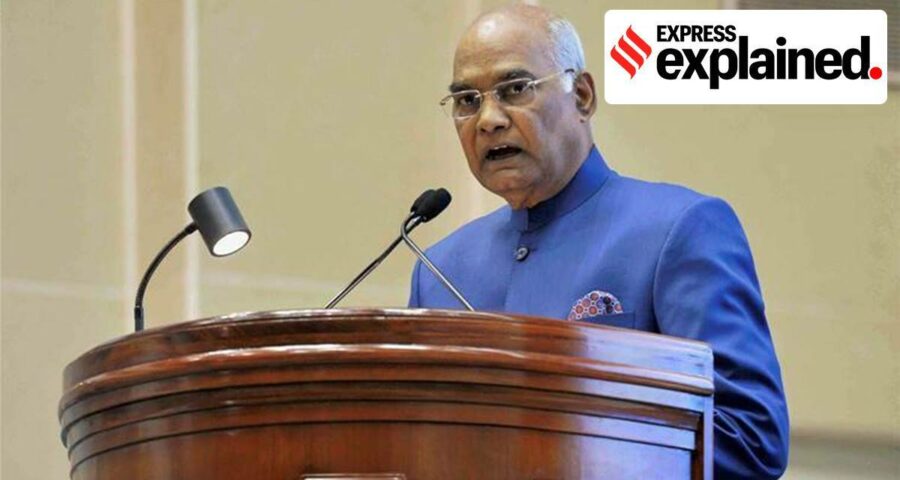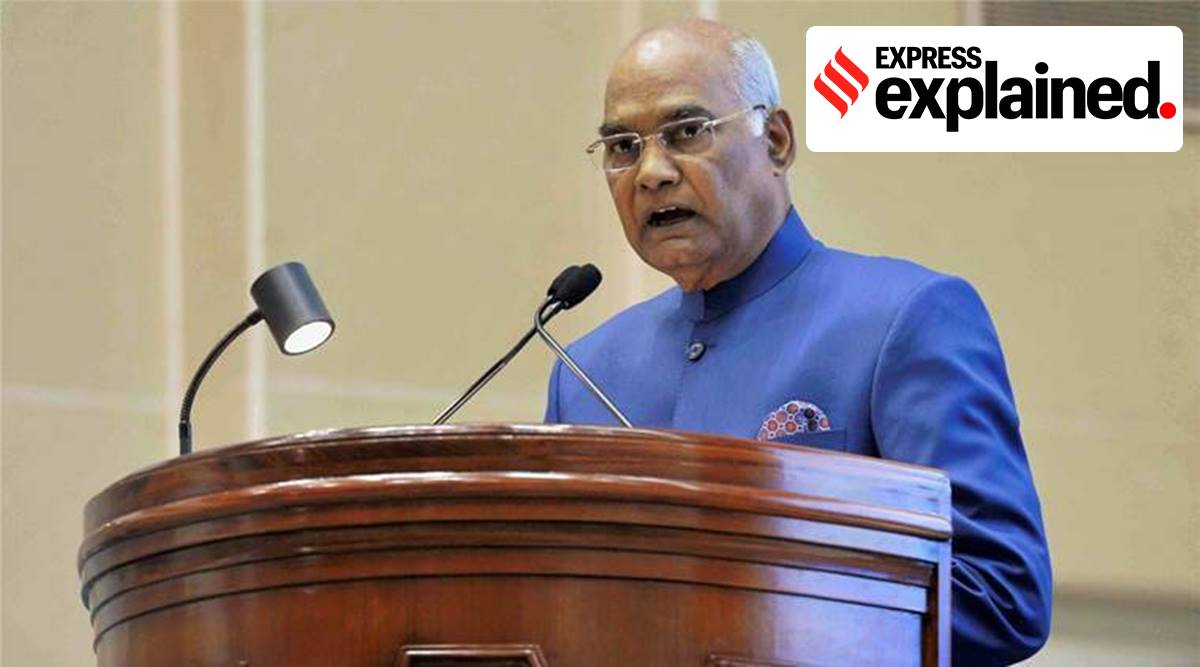This year's first Parliament session begins Friday with President Ram Nath Kovind's address. How did this tradition begin, what is the protocol followed, and what have the speeches dwelt on over the years?
The first Parliament session of 2021 will begin on Friday with President Ram Nath Kovind addressing members of both Houses of Parliament. If he does not stand for re-election, it will be his second-last address to Parliament. In his speech, there will be an indication of the government’s plans and focus areas for the year ahead. While his address will mark the beginning of the session, it will not constitute a joint sitting of the two Houses.
History & precedent
In the United Kingdom, the history of the monarch addressing the Parliament goes back to the 16th century. In the United States, President Gorge Washington addressed Congress for the first time in 1790. In India, the practice of the President addressing Parliament can be traced back to the Government of India Act of 1919. This law gave the Governor-General the right of addressing the Legislative Assembly and the Council of State. The law did not have a provision for a joint address but the Governor-General did address the Assembly and the Council together on multiple occasions. There was no address by him to the Constituent Assembly (Legislative) from 1947 to 1950. And after the Constitution came into force, President Rajendra Prasad addressed members of Lok Sabha and Rajya Sabha for the first time on January 31, 1950.
The Constitution gives the President the power to address either House or a joint sitting of the two Houses of Parliament. Article 87 provides two special occasions on which the President addresses a joint sitting. The first is to address the opening session of a new legislature after a general election. The second is to address the first sitting of Parliament each year. A session of a new or continuing legislature cannot begin without fulfilling this requirement. When the Constitution came into force, the President was required to address each session of Parliament. So during the provisional Parliament in 1950, President Prasad gave an address before every session. The First Amendment to the Constitution in 1951 changed this position and made the President’s address once a year.
By the govt, about the govt
There is no set format for the President’s speech. The Constitution states that the President shall “inform Parliament of the cause of the summons”. During the making of the Constitution, Prof K T Shah wanted the President’s address to be more specific. He suggested that the language be changed to specify that the President shall inform Parliament “on the general state of the Union including financial proposals, and other particular issues of policy he deems suitable for such address”. His amendment was inspired by the US Constitution, according to which the President “shall from time to time give to the Congress information on the State of the Union, and recommend to their consideration such measures as he shall judge necessary and expedient”. But Prof Shah’s amendment was rejected by the Constituent Assembly. The address of the President follows a general structure in which it highlights the government’s accomplishments from the previous year and sets the broad governance agenda for the coming year.
The speech that the President reads is the viewpoint of the government and is written by it. Usually, in December, the Prime Minister’s Office asks the various ministries to start sending in their inputs for the speech. A message also goes out from the Ministry of Parliamentary Affairs asking ministries to send information about any legislative proposals that need to be included in the President’s address. All this information is aggregated and shaped into a speech, which is then sent to the President. The government uses the President’s address to make policy and legislative announcements.
For example, in 1985 President Giani Zail Singh announced that Prime Minister Rajiv Gandhi’s government intended to introduce a new national education policy and the anti-defection law. In 1996, Prime Minister Atal Bihari Vajpayee’s 13-day government announced its intention of giving statehood to Uttaranchal and Vananchal (Jharkhand) and 33 per cent reservation to women in legislatures. During his second stint in 1999, Prime Minister Vajpayee’s government mooted the idea of a fixed term for Lok Sabha and state Vidhan Sabhas. After the devastating tsunami of 2004, Prime Minister Manmohan Singh’s government used the President’s Address to announce the creation of a national law for disaster management. And in 2015, President Pranab Mukherjee voiced the Narendra Modi government’s plan to expedite financial sector reforms and its endeavour for the smooth conduct of legislative business and enactment of progressive laws in Parliament.
Procedure & tradition
In the days following the President’s address, a motion is moved in the two Houses thanking the President for his address. This is an occasion for MPs in the two Houses to have a broad debate on governance in the country. The Prime Minister replies to the motion of thanks in both Houses, and responds to the issues raised by MPs. The motion is then put to vote and MPs can express their disagreement by moving amendments to the motion. Opposition MPs have been successful in getting amendments passed to the motion of thanks in Rajya Sabha on five occasions (1980, 1989, 2001, 2015, 2016). They have been less successful in Lok Sabha. For example in 2018, Lok Sabha MPs tabled 845 amendments of which 375 were moved and negatived.
The President’s address is one of the most solemn occasions in the Parliamentary calendar. It is the only occasion in the year when the entire Parliament, i.e. the President, Lok Sabha, and Rajya Sabha come together. The event is associated with ceremony and protocol. The Lok Sabha Secretariat prepares extensively for this annual event. In the past, it used to get 150 yards of red baize cloth from the President’s house for the ceremonial procession. An officer of Lok Sabha would also be instructed to remind the ADC to the President to bring the water and tumbler from Rashtrapati Bhawan for the President’s use. The President arrives at Parliament House escorted by the Presidential Guards and is received by the presiding officers of the two Houses, the Prime Minister, the Minister for Parliamentary Affairs, and the Secretaries-General of the two Houses. He is then escorted to the Central Hall where he delivers his address to the assembled MPs of Lok Sabha and Rajya Sabha.
Chakshu Roy is Head of Outreach, PRS Legislative Research
Source: Read Full Article



